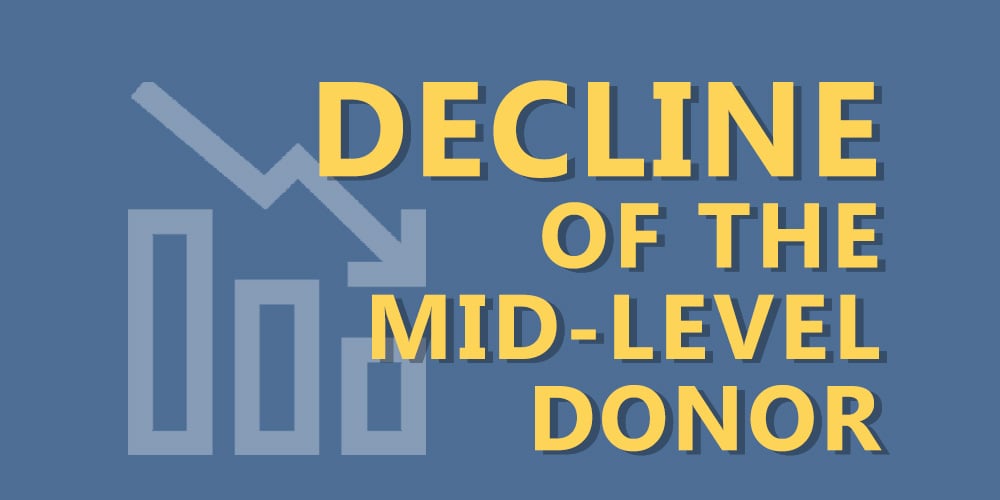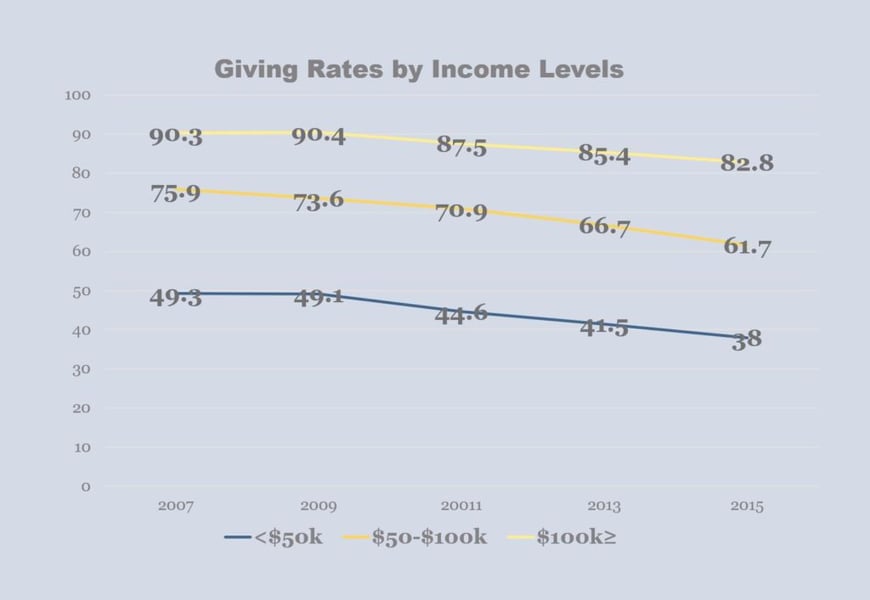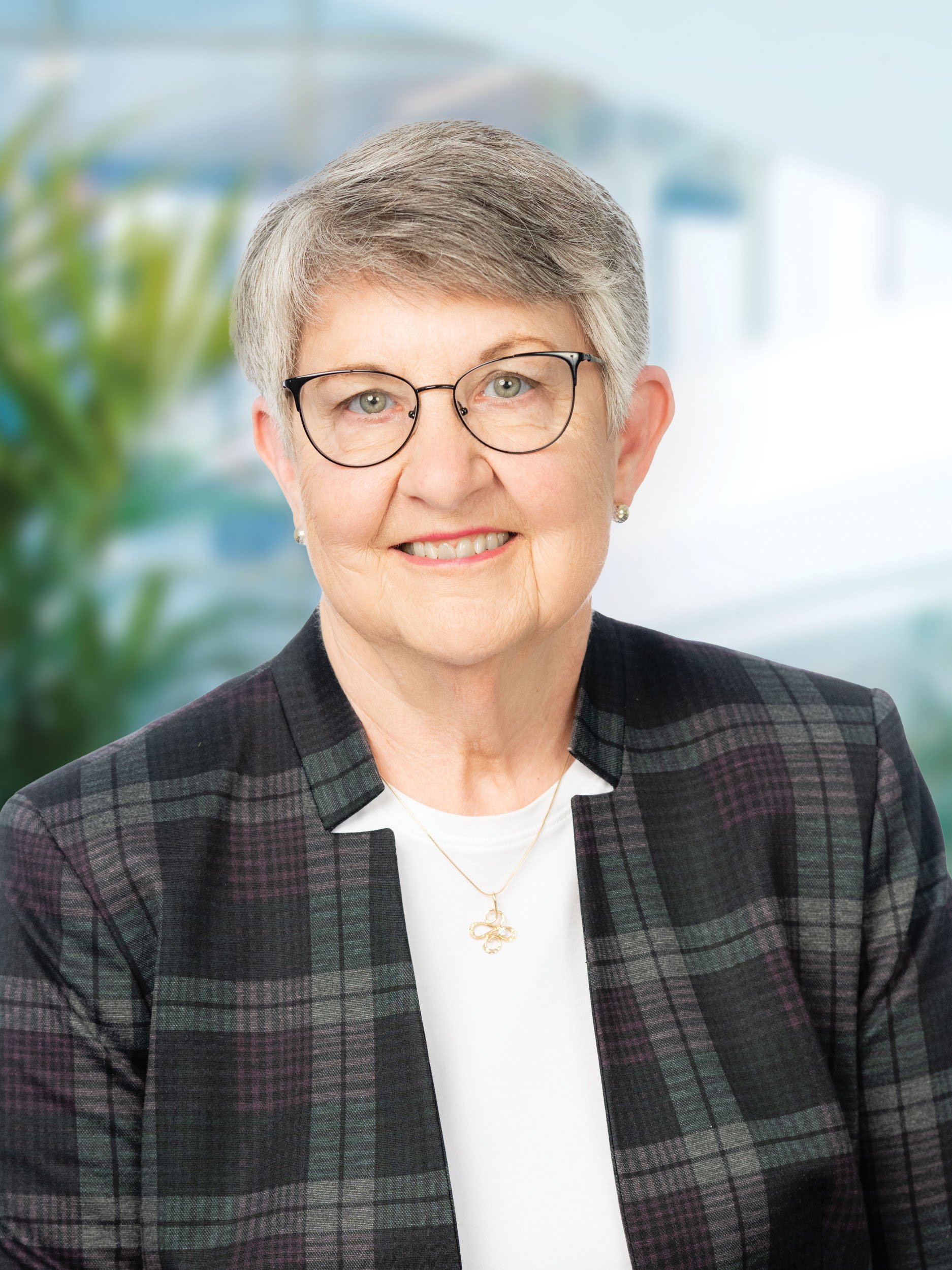This blog is a companion piece to an earlier post, Giving USA: Dissecting the Headlines. Read it here.
The Data
According to the Fundraising Effectiveness Project, giving by individuals in 2018 was up slightly by 1.6%, powered by gains in giving by donors who gave $1,000 or more. But the sobering news is that the number of total donors was down by 4.5%, retention was down by 6.3%, donor acquisition was down, and giving by mid-level and general donors was down by 4.0% or more.
The Network for Good and Blackbaud’s Charitable Giving Report also reported slight increases in giving of 1.2% and 1.5% respectively while noting decreased giving from smaller donors.
Unfortunately, declines among so-called mid-level and small donors have been underway for some time. According to the report Gilded Giving 2018, “the number of low dollar and mid-level donors has declined by about 2% each year since 2000.”
Furthermore, the Blackbaud Charitable Giving Report for 2018 indicates that giving to large organizations (those that raised more than $10 million in 2018) grew by 2.3%; giving to medium-sized organizations grew by 2.0%; and giving to small organizations (those raising less than $1 million) declined by 2.3%.
We also learn from the 2018 DAF Report from the National Philanthropic Trust that donor advised funds (DAFs) are an increasingly popular way for individuals give. In 2017, giving to DAFs represented 10.2% of all individual giving, up from 4.4% in 2010. Figures for 2018 are not yet available, but it’s realistic to expect the percentage will continue to grow.
Independent researchers have calculated an 87% “flow through” rate for DAFs, meaning that 87% of contributions made to charitable sponsors such as community foundations or Fidelity Charitable are passed on to mission-driven nonprofits in the same year they are given. Other sources suggest the “flow through” rate may be lower. At best, giving through these nonprofit intermediaries results in a delay in the distribution of funds to mission-driven nonprofits.
What it Means
What all of this says is that total giving is increasingly being driven by wealthy Americans, that more individual giving is being funneled to donor advised funds and independent foundations before being partially passed along to mission-driven nonprofits, and that larger organizations are most likely to benefit from increases in giving, especially from large gifts.
It’s not surprising with the growing concentration of wealth in the U.S. that we see trends toward more large gifts from a wealthy few and declining giving from middle- and lower-income donors. According to the Pew Research Center, since 1971 the percent of middle-class Americans has declined from 61% to 52% and both income and wealth of the middle-class have stagnated. What’s more, giving rates have declined by almost 15% since 2007.
These are environmental factors beyond our reach, but we do need to ask ourselves this:
Are nonprofit fundraising attitudes and practices are contributing to the problem?
Susan Raymond, senior counsel with Changing Our World, was quoted in the Chronicle of Philanthropy publication America’s Changing Giving Habits saying “I wish I had a dime for every meeting I have sat in in which a nonprofit has denigrated the small donor…”
Questions to Ask Ourselves
- Do we need to check our attitudes about small donors?
- Have we cut back on acquisition strategies because they appear to be high cost/low return?
- Have we adopted strategies that purposefully pursue larger gifts from fewer donors and given short shrift to smaller donors?
- Have we placed too much emphasis on dollar goals and less on participation?
- Does it matter that we give greater recognition to donors who make larger gifts?
- Do we stratify our gift acknowledgements by gift size, suggesting by our methods that small gifts don’t matter?
- Have we under invested in strategies to retain donors, especially first-time donors?
- Do we, as organizations, fail to provide budget resources to support effective, multichannel communication and engagement strategies for all our donors?
- Have we assumed that the only cost-effective way to raise more money is to invest in major gifts and shifted resources away from strategies that attract and retain smaller donors?
If we have answered “yes” to any of these questions and most especially if our organizations depend on mid-level and general donors, then we need to think differently about strategies to acquire, retain, and build sustaining relationships with our donors.
Try a New Strategy
Focus on relationship-building and personalization.
Know your donors, talk with them, respect their expectations and preferences. Document impact of giving for all sizes of gifts. Provide options for donors to direct their gifts including for aspects of general operational support. Segment, craft, and deliver messages according to donor preferences.
Promote sustaining giving programs.
These are also known as recurring or monthly giving programs. Donors give more in a year when they participate in these programs. They are more likely to continue to give from year-to-year. Younger donors are more likely to give this way. Plus, these programs allow you shift your efforts to stewardship and relationship-building with these donors away from managing direct-mail and other periodic solicitation tactics.
Invest in mid-level donor strategies.
Mid-level donors are often lost between direct solicitation and major gift programs. Create specific portfolios of mid-level donors and prospects to be managed on a personal level by staff and Board.
Explore collaborative giving options.
These options such as giving circles are popular among women and persons from underrepresented donor groups, partly because they pool smaller and mid-level gifts for greater impact. Research finds that members give more time and money and are more diverse.
Cultivate donors who give through donor advised funds.
Be sure they understand how important it is for their dollars to flow from DAF accounts to your organization in a timely fashion. Furthermore, according to Cygnus Research, 96% of DAF fund holders say they also contribute directly to nonprofits.
Recognize and steward small and mid-level donors as if they matter—because they do!



Comments
Questions or comments? Join the conversation!